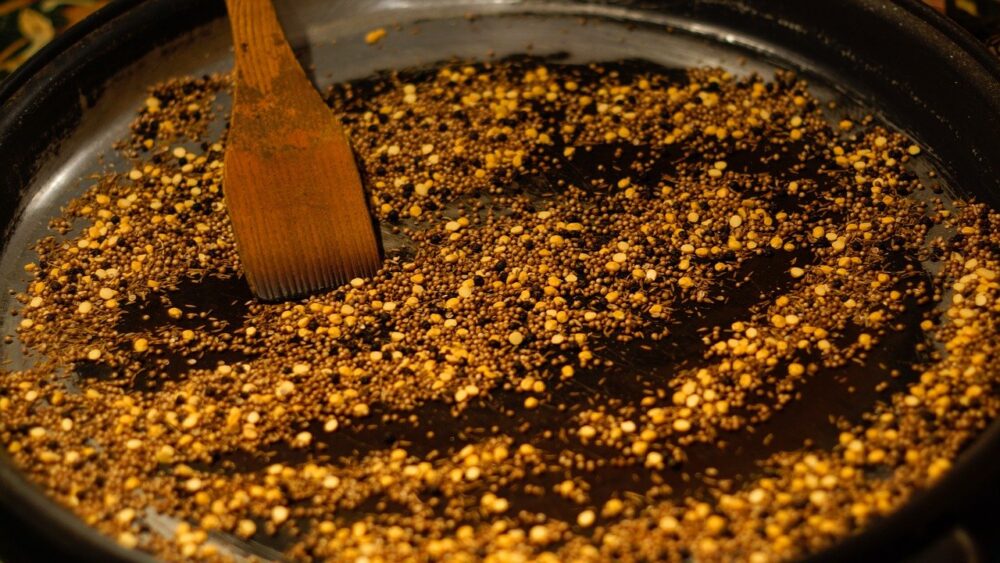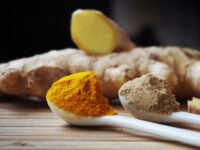Some of the richest, most intense flavors are achieved by blooming, or tempering, spices. Integral to South Asian cuisine but applicable to many areas of cooking, the technique involves frying aromatic ingredients in fat before adding them to a dish. To understand how this works, we need to take a closer look at the chemistry of flavors.
Flavor comes from volatile flavor compounds, such as capsaicin in chili peppers or thymol in thyme. Volatile compounds are those that evaporate at relatively low temperatures. When we breathe, these airborne compounds enter through the nasal cavity and play a major role in how we perceive flavor. However, these compounds are sometimes prevented from evaporating when they are contained within whole seeds or locked in through drying processes. When applying heat to spices during the cooking process, the compounds dislodge from the spices and more flavor molecules reach our sense organs.
Flavor comes from volatile flavor compounds, such as capsaicin in chili peppers or thymol in thyme.
Heat is crucial to releasing flavors, but there is another aspect to tempering: fat. Spices bloom best in fat as opposed to water. Most flavor compounds are fat-soluble instead of water-soluble, so oil can extract and absorb more of the molecules and help spread them throughout the dish. In a secondary effect, fat adheres to the tongue more strongly than water, bringing the flavor molecules into greater contact with our taste buds.
Heat is crucial to releasing flavors, but there is another aspect to tempering: fat.
Since flavor compounds are chemically diverse, including alcohols, aldehydes, and esters, each ingredient may react differently to the process. For example, garlic becomes less intense when cooked because allicin, its main flavor compound, is destroyed by heat, whereas the flavor of thyme can become up to 10 times more intense.
Want to try this at home? Heat seeds, ground spices, herbs, or garlic in oil or butter over medium-high heat until they smell toasty and fragrant. Then use the mixture in recipes or drizzle it over cooked vegetables. You will be rewarded with magnificent flavors and a delicious-smelling kitchen!
Sources: 1
Image Source: Pixabay



